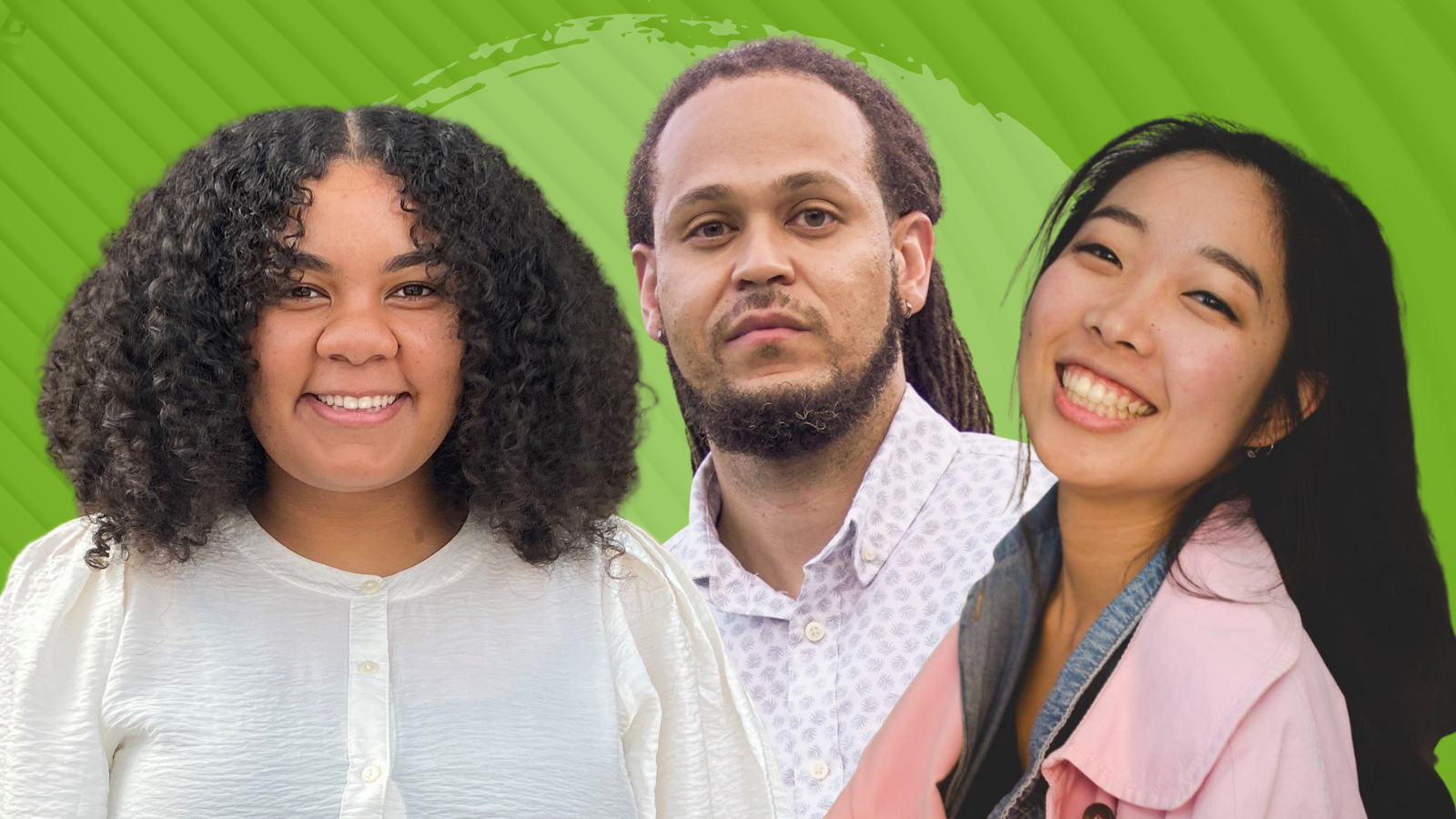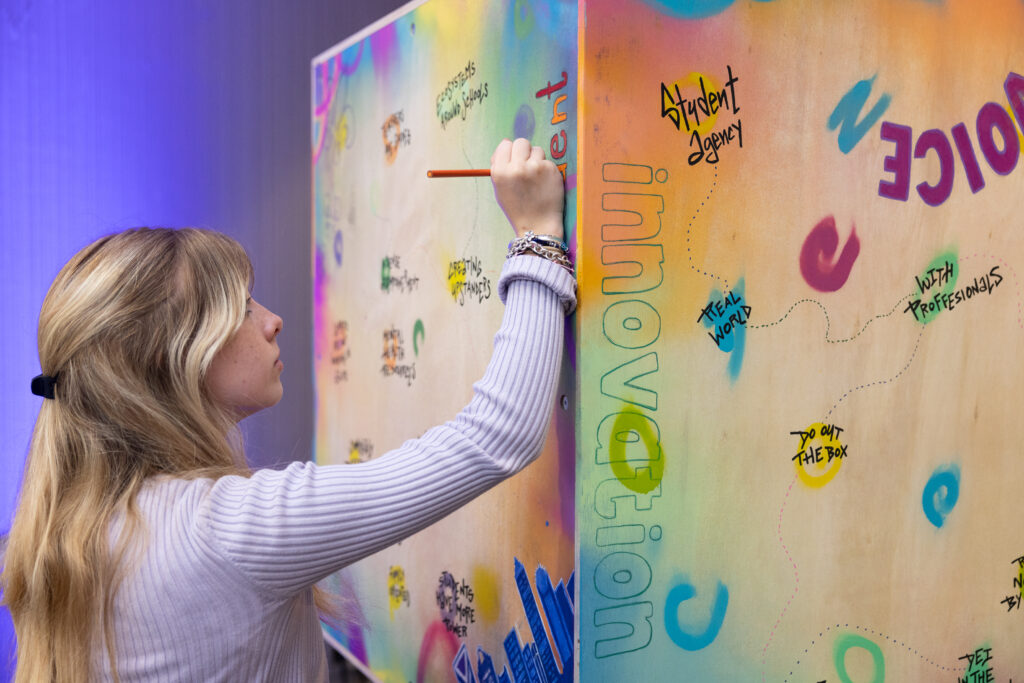By Natalie Wilson, Partner, Racial Equity
As a Black mother raising a brilliant Black girl who attends a public middle school, I came to this work because I wanted more for all children, especially those furthest from opportunity. I wanted to be at the table where decisions were made to find, fund, and support the best, boldest ideas that would improve outcomes for students. I believed that the way to “earn” a right to a seat at that table was to pursue graduate degrees, internships, and prestigious fellowships, and to get more experience and credibility working for a foundation.
But who is better equipped than a parent to decide what solutions would best meet the needs of their young children? At NewSchools, our work with participatory grantmaking reminds me daily that being a parent, a student, an educator, or a community member is more than enough to earn a right to a seat at the decision-making table. Although we know that the best decisions are made when there are diverse perspectives in the room, philanthropy does not have a great track record when it comes to including diverse voices in their giving. We know that there is more for our sector to do when it comes to making decisions in ways that lean on the wisdom, knowledge, and experience of the communities they serve.
Although we know that the best decisions are made when there are diverse perspectives in the room, philanthropy does not have a great track record when it comes to including diverse voices in their giving.
This is the second year that NewSchools is ceding decision-making power to a diverse council of parents, students, and educators in our racial equity investment area. Last year’s council funded 10 organizations using their own selection criteria. The council members were excited by the opportunity to create a more equitable funding experience for leaders of color and felt empowered by the decision-making process, but our pilot year was not without challenges. We learned some significant lessons that we want to share with the field. The experience taught us a lot about how to work alongside communities to be a better funder. We hope that by sharing what we learned more funders are inspired and motivated to join us in adopting more democratic grantmaking approaches to do even more good.
Seek out decision-makers who best represent the students and communities you aim to serve.
Community members evaluate funding applications through a lens of what students in their communities need most and what would make the biggest difference in their lives. Often their identities and lived experiences come into play, which reminds us that who is in the room matters. This year’s Racial Equity Council is a beautifully diverse representation of the students and communities we serve through our grantmaking. It is a multigenerational group of 20 Black, Latinx, Native, and Asian parents, students, educators, and innovators from urban, rural, and suburban communities around the country.
We were amazed to receive over 400 applications in just 10 days for 20 spots, letting us know that people are eager to create a more equitable education system through philanthropy.
Instead of solely tapping our networks to recommend new council members, this year we developed a brief application to reach a highly-diverse group of decision-makers. We were amazed to receive over 400 applications in just 10 days for 20 spots, letting us know that people are eager to create a more equitable education system through philanthropy. Many responded that while they had little or no formal experience with grantmaking, they wanted to serve on the council because they felt compelled by their own and others’ experiences navigating an inequitable system. In our selection process, we not only considered racial identity, but also other intersectional identities and experiences that resonate with students furthest from opportunity; 80% of our council members were eligible to receive free or reduced–price lunch while they were PK-12 students; 65% are first-generation college students or graduates, 40% are multilingual, and 25% identify as LGBTQIA+.
The composition of the decision-makers matters, so it’s important to prioritize diversity, equity, and inclusion upfront.
Build relationships, cultivate trust, and align on a shared vision before anything else.
Cultivating trust and aligning on a shared vision for racial equity across lines of difference is critical for group decision-making. While we partnered with an external facilitator to limit our influence and create the conditions for the council to do their best work, we moved too fast last year and we did not spend enough time upfront on relationship-building, norm-setting, and discussing how our identities and experiences shape the lens through which we make decisions. We noticed that this impacted how the council shared opinions and engaged in constructive conversations with each other. At times, council members deferred to the decisions of others or followed the lead of those who advocated most passionately, instead of engaging in rich dialogue built on their shared goals.
This year, we resisted the temptation to dive into the selection process right away and instead spent the first full month with the council focusing on relationship building and grounding in a collective why for this work. We started by creating meaningful opportunities for people to get to know each other and connect. This required modeling vulnerability and, again in partnership with an external facilitator, co-creating norms and establishing a safe space for the participants to feel secure enough expressing themselves and telling their stories. We also spent time developing a shared understanding of the history of racial inequity in the U.S. education system across different racial identities, acknowledging that even though there are often shared experiences among people of color who have been oppressed in this country, we are not a monolith and there is still so much for us all to learn from one another.
Our hope is that this grounding leads to stronger relationships and more robust decision-making conversations that surface innovative ideas to affect change for students. We are so inspired by the incredible group of leaders who are already leaning into vulnerability, joy, and their collective power.
Be clear about where and how you are ceding power and why. Carve out space for learning and reflection.
In our pilot year, we attempted to build the process while running it. While we pride ourselves in trying things out without all the answers, we also learned that this created a lack of clarity for council members who were generally eager to disrupt philanthropy and wondered how and where their input would be implemented.
This year, we’ve found that outlining the process and decision-points at the start has helped council members better understand their roles and responsibilities. We also shortened the council’s commitment to the summer months to increase engagement from parents, students and educators. In the application, we outlined expectations so that prospective council members knew exactly what they were getting into, how long they’d be engaging in the work, when and how often they’d come together, and how they’d be compensated. This allows the group to focus on the most impactful and empowering parts of this work; building trusting relationships, developing selection criteria, talking with applicants about their ideas, and ultimately deciding who to fund.
It is critically important for our team to show up as our authentic full selves, name our why and purpose for this work and share what we’re learning so that the council feels comfortable sharing input on all aspects of the work with us. We regularly reflect on our learning agenda, solicit feedback, and continue to be responsive to the council by adapting to changing circumstances as needed and building on learning for next year.
Limit your influence in order to foster innovation and creativity.
Participatory grantmaking involves grappling with tensions between supporting the decision-makers and truly ceding power and fostering innovation. We know that getting community members seats at the decision-making table is only one part of the necessary disruption that philanthropy needs. The very systems, structures, and rubrics that have long been a part of philanthropy and have led to the same results need to be interrogated. Last year, as the council was preparing to set their criteria to review applications, we shared our own investment guidelines and that of other equity focused foundations as examples to help get their thoughts going. We realized that this heavily influenced the criteria they developed and wondered if it stifled creativity.
This year, we took a different approach and opted not to share exemplars. Instead we asked the council to review sample applications and consider what they would need to see to believe that the ideas would advance racial equity in education. We noticed that removing the philanthropic jargon and moving away from referencing historical frameworks allowed the council to align on what really matters to them – community-driven efforts that resist and disrupt systemic oppression, amplify the assets and aspirations of historically excluded communities, and have a meaningful impact on students.
In traditional philanthropy, funders too often decide what students and communities need without input from those groups. Participatory grantmaking allows those closest to the problem to be involved in finding and funding the solutions that are most needed in those communities. Ceding power is not easy to do, but it is one of the best ways funders can gain trust and have a deeper, more lasting impact in the communities they serve.



